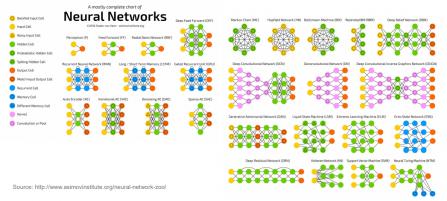One of the more interesting parts of blogging for SemiWiki is getting to know emerging EDA and IP companies from around the world. As I have mentioned before, there are some incredibly intelligent people in the fabless semiconductor ecosystem solving very complex problems. It is a two way exchange of course since we know the market for their products intimately through our work on SemiWiki and experience as working semiconductor professionals. I first met Ramy at #54DAC in Austin which brings us to this interview:
Please tell us about Intento Design?
Intento Design is a French company located in Paris. The company started with a strong understanding of EDA and a desire to improve analog design automation. Currently, analog design has less automation than digital design and, because of this, it remains the bottleneck of integrated circuit system development. And I say system development because that’s where the value is in the today’s semiconductor market. As we move up the value chain toward increasingly complex integrated systems, the ability of a semiconductor company to capture value in a timely manner is put at risk by analog design schedule delay. Conversely, the relative contribution to system level value is large from the analog circuitry as these disproportionately impact real world performance factors – such as signal-to-noise quality and power consumption.
What makes Intento Design unique?
First, let’s talk about what makes analog designers unique, then I can explain Intento Design to you. Often you hear that analog design is an art more than a science, and there’s a lot of truth to that statement. Innovation in analog design takes place at the schematic where local feedback loops can be visualized. Take the schematic away and the analog design creativity vanishes. This is what makes Intento Design unique – our products are schematic centric, allowing the analog designer to benefit from advanced automation, be able to move between process technologies and yet still retain the schematic view.
At Intento Design we know the combination of a circuit schematic together with the designer intentions, which is just another way of saying engineering “know how” by the way, is far more than the sum of the parts. In fact, these two information structures, the schematic view and the designer intentions, carry substantial information only when they are put together. Clearly, someone untrained in the art, so to speak, could fail to appreciate an analog circuit schematic without an explanation!
Intento Design is the first company to formalize a process of attaching an intention view to the schematic. Interestingly, we’ve managed to do this in a technology independent manner which gives analog designers unlimited exploration capacity to move their schematic design into different technology processes seamlessly.
What keeps analog designers up at night?
The analog designers that I know love what they do, and often what is keeping them up at night is thinking about circuit design! It’s an incredibly creative profession. To design and innovate, designers must achieve a deep understanding of both their schematic circuit and the process technology. The main problem that causes analog designers, and their managers, to lose sleep is that there is simply not enough time in the schedule to achieve new levels of performance or to innovate for novel analog function.
To get to system integration and verification faster, the analog design phase must be accelerated. However, in today’s complicated process technologies, the analog design phase is now actually taking longer than before, and designers still need more time. The novel ability to create a design intention view and complete an exploration of the intended performance trade-offs using Intento Design tools in any technology gives analog designers a substantial time advantage.
How can ID-XPLORE help?
The core technical capability of ID-XPLORE is highly automated exploration of the performance limits of any schematic circuit in any process technology. By providing the ability to quickly and accurately explore schematic changes in a technology, ID-XPLORE helps designers to innovate analog circuits, migrate between technologies and to meet challenging design specifications on schedule.
For example, to resize a schematic in a different technology with the same, or new, performance specifications, something which can currently take a design team a few weeks to complete, can be done in a single day with the help of **ID-XPLORE. For design acceleration, very challenging circuit design problems which can take a skilled analog designer over week to understand and resolve can be re-designed in just hours using data coming from the ID-XPLORE tool. This level of disruptive innovation is possible because the ID-XPLORE works at the schematic level but provides novel, exhaustive and very data-intensive exploration results quickly.
At Intento Design, we made it our goal to create a tool that enables analog designers to reach the speed of digital circuit design very seamlessly. ID-XPLORE is a plugin tool which works in existing schematic centric design flows. This allows analog designers to stay focused on schematic innovation, while ID-XPLORE provides rapid transistor sizing and design insight.
Can you provide some real world examples?
Yes, absolutely. In addition to design acceleration and technology migration, or technology porting as it is sometimes called, we are starting to see some very specific and interesting use cases which I can tell you about.
A recent case was a performance issue in a OTA where the open-loop gain was compromised (too low) during one phase of a switched-capacitor common-mode feedback. The analog designers had worked for a couple of weeks without a definitive architectural solution, but they were reluctant to increase power consumption. Because ID-XPLORE operations are SPICE accurate, a definitive answer can actually be obtained, and fast. The analog designer constrained the DC bias range and ID-XPLORE was used to calculate the transistor sizing and testbench performance evaluation for various DC bias points within the constrained range. Within hours, the ID-Xplore tool completed exploration over a range of millions of points and returned solutions that allowed the designer to fully understand their design trade-offs.
Being able to obtain a definitive “yes” or “no” answer for schematic circuit performance in a technology has been of high interest to recent clients. This capability is a results of the automated, high-speed operations of ID-XPLORE which provides rapid transistor re-sizing and performance analysis. The operations can extract a hard limit or a trend within a technology helping the designer to make decisions. The designer can pursue an alternative schematic topology or present the accurate performance trade-offs obtained by ID-XPLORE to the system team for decisions on issues such as power and performance.
Yet another case is where ID-XPLORE was used in the design of a multi-stage, 100-transistor amplifier inside a power-control circuit. In this case, there was a need to push speed performance significantly past existing best-in-house design by 30%. Using ID-XPLORE, the designer achieved the target performance increase is less than a day. But, in addition to this, ID-XPLORE identified a design solution that allowed much smaller transistors at the output stage compared with existing in-house design efforts. Reduction of the output stage transistor sizing allowed a significantly reduced layout area.
Because of the exhaustive exploration capability, which is simply not possible with other tools, this client and others consider the ID-Xplore tool as a kind of “reasonability check” for their own carefully crafted design solutions. When analog designers make decisions for performance versus power trade-offs, their design results can sometimes end up going down a path which leads to unnecessarily oversized transistors.
Which markets do you feel offer the best opportunities for ID-XPLORE over the next few years and why?
The semiconductor industry is constantly changing and ID-Xplore is relevant in many emerging industry contexts. ID-Xplore is currently seeing a large opportunity in technology migration for IP-Portfolio partnerships, as well as corporate mergers where product lines must align newly acquired IP over several technologies.
For the analog designer, the raison d’être of ID-XPLORE, the tool is particularly useful in situations where the performance of the circuit pushes the limits of the technology. Growth in mobile embedded systems, such as IoT, presents a large opportunity for ID-XPLORE as these circuits require extremely low-power operation which is often achieved with innovative circuitry in localized bias conditions. As we head toward more and more applications using mobile embedded systems, power and area efficiency are increasingly competitive positions for semiconductor companies to hold and ID-XPLORE can help them achieve this.
http://www.intento-design.com/
Also Read:
CEO Interview: Rene Donkers of Fractal Technologies
CTO Interview: Ty Garibay of ArterisIP
CEO Interview: Michel Villemain of Presto Engineering, Inc.











